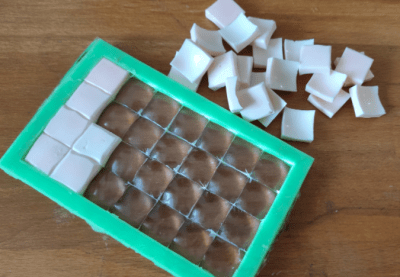[Jan Mrázek] is no stranger at all to home-grown improvements with his Elegoo Mars SLA 3D printer, and there is a lot going on in his experimental multi-LED upgrade which even involved casting his own lens array. In the end it did speed up his prints by a factor of three to four, though he cooked an LCD to failure in the process. Still, it was a fun project done during a COVID-19 lockdown; as usual there is a lot to learn from [Jan]’s experiences but the mod is not something he necessarily recommends people do for themselves.
[Jan] started by wondering whether better print quality and performance could be obtained by improving the printer’s UV light source. The stock printer uses a single large UV LED nestled into a reflector, but [Jan] decided to try making a more precise source of UV, aiming to make the UV rays as parallel as possible.

To do this, he took a two-pronged approach. One was to replace the single large UV LED with a 4×7 array of emitters plus heat sink and fans. The other was to make a matching array of custom lenses to get the UV rays as parallel as possible.
Casting one’s own lens array out of clear epoxy was a lot of work and had mixed results, but again, it was a lockdown project and the usual “is-this-really-worth-it” rules were relaxed. In short, casting a single custom lens out of clear epoxy worked shockingly well, but when [Jan] scaled it up to casting a whole 4×7 array of them, results were mixed. Mold deformation and artifacts caused by the areas between individual lenses robbed the end result of much of its promise.
More success was had with the array of UV emitters, which enabled faster curing thanks to higher power, but the heat needs to be managed. The stock emitter of the printer is about 30 W, and [Jan] was running his new array at 240 W. This meant a blazing fast one second exposure time per layer, but the heat generated by the new lighting was higher than anticipated. After only ten hours the LCD failed, probably at least in part due to the heat. [Jan] halved the power of the array down to 120 W and added an extra fan, which appears to have done the trick. Exposure time is two to three seconds per layer, and it’s up to 150 hours of printing without problems.
Again, it’s not a process [Jan] necessarily recommends to others (and he definitely recommends buying lenses if at all possible instead of casting them) but as usual there is a lot to learn from his frank sharing of results, both good and bad. We’ve seen 3D-printed lenses as well as adding WiFi connectivity to one of these hobbyist printers, and it’s great to see the spirit of hacking alive and well when it comes to these devices.
















Another POF is that epoxy is not usually UV resistant.
I wonder how much a UV-resistant urethane coating (or UV additive in the resin itself) will affect the print time.
Well, it depends on what you mean by UV-resistance. Most of the water-clear epoxy have really high transparency for 405 nm light (the wavelength for curing the resin) and do not degrade by it. What damages the resins are waves with wavelenght less than 350 nm. You can read the resin datasheet or do some experiments as I did (however I haven’t published them yet).
Why not glue the individual lenses together?
Time reasons. 1 lens hardens 48 hours. If you have I primer mold, it will take over month and half to get all lenses. It you have multiple modls, why bother with gluing, when you can cast them at once?
Well yea I see what your saying. But since it was mentioned that there was mixed results when done altogether, maybe multiple molds would speed that up a bit. Not that it matters since it worked.
Nice work, 3 times faster print time would be huge..
Instead of own lens, can’t he use fresnel lens? We have seen DIYperks use them for his DIY projector which uses the same parallel light needs.
As someone whose earliest mashup was a DIY projector made by mounting an LCD pocket TV display into a halogen bulb slide projector, I can commiserate with the disappointment of fast LCD death due to excessive heat. Mine barely made it an hour…
But it’s not really a wonder with a heat bulb as light source.
Luckily we have more efficient light sources now.
Once I had the opportunity to tear down a really big old video beamer. 3 LCDs about 10 * 15cm. I think there were about 10 fans in the device. The liht source was a big discharge lamp, and I think not only the LCDs had individal fans, but also several other optical components.
When I first read the title I thought this was satire until I realized it’s referring to SLA not FDM, 😂
you should now try with an array of small Fresnel lenses, may be casted all at once on a silicone made mold casted from a 3d printed positive
You cannot easily create a 3D printed Fresnel lens. The lens to actually work needs angled surface. There cannot be any layer lines. With traditional lens, you can polish it. You cannot polish Fresnel lens.
The heating of the LCD could be reduced using a “hot mirror” piece of coated glass, which reflects IR, but not visible. Thus the IR radiance from the hot led matrix would be reduced.
Have you thought of a custom water loop for cooling?